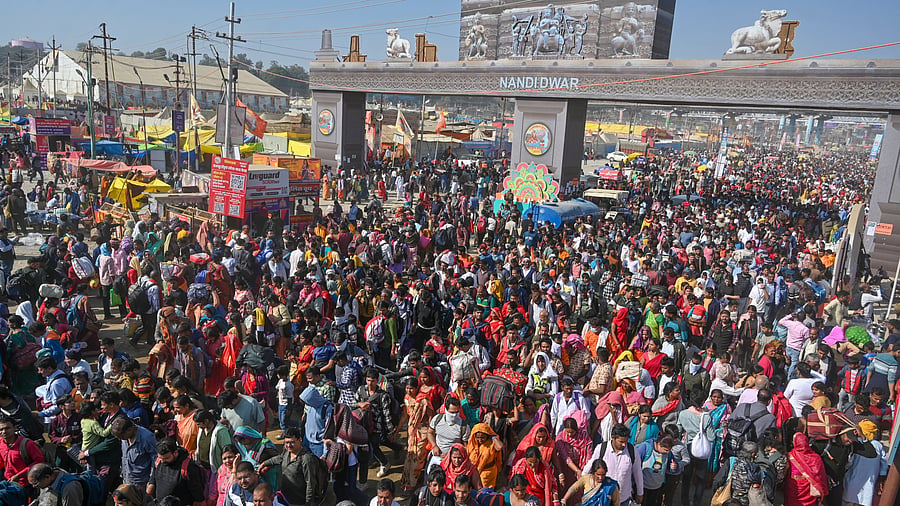
Prayagraj: Devotees in large numbers at the Nandi Dwar near the Sangam during the Mahakumbh Mela, in Prayagraj, Sunday, Feb. 9, 2025.
Credit: PTI Photo
Bengaluru: Religious tourism is booming in India, the recent example being the Mahakumbh which reportedly saw over 50 crore attendees. Real estate firms are rapidly entering this space to meet demand for hotels, hostels, resorts, dorms etc. Experts and industry players believe this to be just the beginning, with more developers planning and building various asset classes in pilgrimage destinations.
The story begins with Ayodhya, according to industry experts. The largest developer present there is the House of Abhinandan Lodha (HOABL).
“HOABL is a developer from Maharashtra. Him coming into UP, which is one of the most volatile belts of India, is a very big step for him. The reason he is able to sustain this is because the government is providing him the right kind of infrastructure,”said Sahil Verma, chief operating officer of Shray Projects. HOABL is continuing to explore places like Vrindavan and Amritsar.
A lot of large and mid-size developers are now entering Ayodhya, following government incentives, said Bhavesh Kothari, CEO and Founder, Property First Realty. He added that Property First has also sold plots in Ayodhya.
Betting big on retirement homes
Asset classes gaining the most
popularity are plotted developments. “This is followed by hotels, resorts, which are capital-intensive projects. In places like Shirdi and Tirupati, a lot of developers are building townships as well,” said Swapnil Anil, Managing
Director, Advisory Services, Colliers India.
Another segment gaining recent traction is senior living, in places like Varanasi, for example, said experts. Post-retirement accommodations are on the rise. This is over and above what hotel players like Taj, Leela, and others are already establishing, along with budget hotels by Lemon Tree and Oyo.
“After plotted developments, people are also building apartments. Rs 6,000 rupees per square foot is currently the rate in most temple cities. So around 1,000 square feet would be Rs 60 lakhs which is the current range which anybody can invest; not luxury apartments because of long-term stays,” explained Kothari.
Government infrastructure and incentives are driving investor and developer interest in these places, stakeholders highlighted. At the same time, land prices are rising fast in these areas because of their increased popularity.
Unorganised to organised shift
While there have been some apprehensions of markets in religious centres like Ayodhya overheating and declining following a realty boom, developers are confident that the future for this market is steady.
“The slowdown is not because of a reduced footfall; it is because the city of Ayodhya itself is getting organised with infrastructure development. The government is getting ready to absorb that sort of development into the micro market. The situation is one of waiting and watching to know about laws, bylaws and buildings which are yet to come,” said Angad Singh Bedi, Chairman and Managing Director, BCD Group.
BCD Group is venturing into religious tourism in an organised manner, targeting 1,000-5,000 homes in the next five years, starting with projects in Ayodhya and Udupi with more in the works.
“We are planning to establish accommodations, sort of like hospitality with a residential touch - between a budget hotel and a service apartment because we are looking to cater to the volume and masses rather than giving a five star elevated experience,” said Bedi.
Along with organised players, unorganised ones are continuing to come up, said analysts, making it difficult to track the data of developers coming up in these regions.